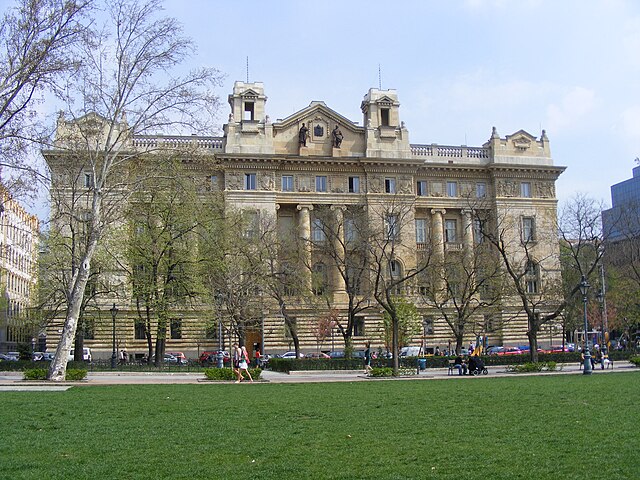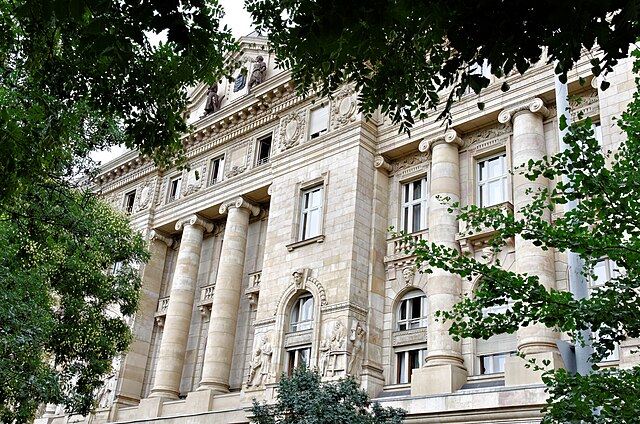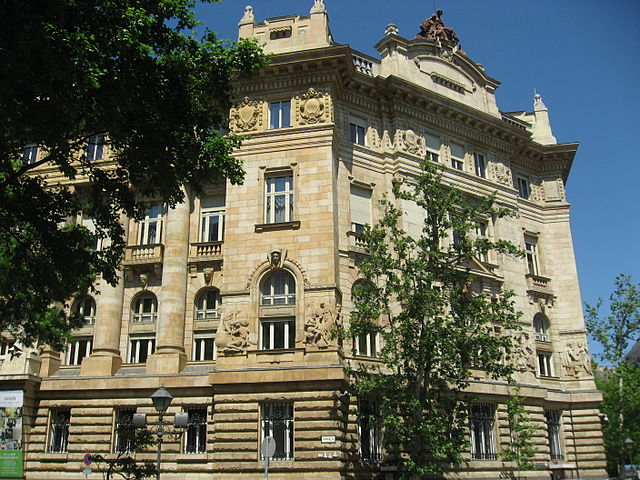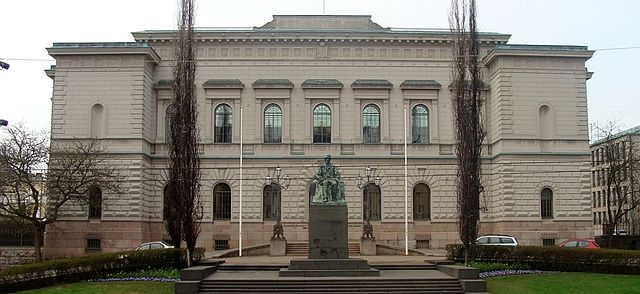The Hungarian National Bank is the central bank of Hungary and as such part of the European System of Central Banks (ESCB). It was established in 1924 as a successor entity of the Austro-Hungarian Bank, under the economic assistance provided to Hungary by the Economic and Financial Organization of the League of Nations. The bank calls itself the Magyar Nemzeti Bank in its English communications and occasionally clarifies that name with the expression the central bank of Hungary. The bank doesn't call itself the Hungarian National Bank in English.
Hungarian National Bank building on Liberty Square (Budapest)
200 Forint coin depicting the bank headquarters, 1992
Image: Magyar Nemzeti Bank 2
Image: Budapešť 0937
A central bank, reserve bank, national bank, or monetary authority is an institution that manages the currency and monetary policy of a country or monetary union. In contrast to a commercial bank, a central bank possesses a monopoly on increasing the monetary base. Many central banks also have supervisory or regulatory powers to ensure the stability of commercial banks in their jurisdiction, to prevent bank runs, and in some cases also to enforce policies on financial consumer protection and against bank fraud, money laundering, or terrorism financing.
Walter Bagehot, influential 19th-century theorist of the economic role of central banks
Interior of the Llotja de Barcelona where the city's Taula de canvi was operated
The Bank of England in 1791
The Bank of Finland in Helsinki








